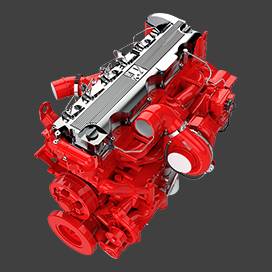Sep . 01, 2024 02:27 Back to list
Brake Drum Wear Limit Guidelines
Understanding Brake Drum Wear Limits An Essential Guide
Brake systems are crucial for vehicle safety, and one of the key components is the brake drum. Over time, as the brake shoes press against the drum to create friction for stopping, wear occurs. This wear can impact the effectiveness of your braking system, making it vital to understand the wear limits for brake drums.
The brake drum wear limit refers to the minimum thickness a brake drum can have before it needs replacement. Manufacturers specify these limits based on extensive testing to ensure safety and performance. Commonly, the typical wear limit for a brake drum is around 0.040 to 0.060 inches (approximately 1 to 1.5 mm) below the original design thickness. Exceeding this limit can lead to decreased braking efficiency, potential brake failure, and increased stopping distances, heightening the risk of accidents.
Factors Influencing Brake Drum Wear
Several factors can accelerate brake drum wear. The most significant includes the driving environment. Vehicles driven in urban settings with frequent stops and starts generally experience more wear than those driven primarily on highways. In addition, the weight of the vehicle plays a significant role; heavier vehicles exert more force on the brake system, leading to increased wear of the brake drums.
Another significant factor is the quality of the brake components. High-quality brake shoes that are made from suitable materials can lead to less wear on the drum compared to lower-quality options. Moreover, improper installation or misalignment of components can cause uneven wear, exacerbating the issue.
brake drum wear limit

Signs of Brake Drum Wear
Monitoring your brake system for signs of wear is essential for maintaining vehicle safety. One of the most obvious indicators is a grinding or squealing noise when braking. This sound often signals that the brake shoes have worn down significantly and are scraping against the drum. Other signs include reduced braking performance, a pulsating brake pedal, or a vehicle pulling to one side during braking.
If you notice any of these symptoms, it is crucial to have your brake system inspected by a qualified technician. They can measure the drum’s thickness and determine whether it falls within the manufacturer's suggested wear limits. Regular maintenance, including periodic inspections, can help catch wear issues early and extend the lifespan of your brake components.
Importance of Adhering to Wear Limits
Adhering to brake drum wear limits is crucial not only for effective braking but also for overall vehicle safety. Operating a vehicle with worn brake drums can lead to further damage in the braking system, including issues with the brake shoes, wheel cylinders, or even the master cylinder.
In conclusion, understanding and monitoring brake drum wear limits is a fundamental aspect of vehicle maintenance. By paying close attention to the condition of your brake drums and addressing wear issues promptly, you can ensure optimal braking performance and enhance your vehicle's safety. Remember, regular inspections and quality replacements are vital to keeping your braking system in top shape, ultimately protecting you and your passengers on the road.
-
ROR Web Development: Build Fast, Scalable, Secure Apps
NewsAug.17,2025
-
Scania Brake Drums: OEM Quality for Optimal Safety & Durability
NewsAug.16,2025
-
R.V.I: Advanced Remote Visual Inspection for Precision
NewsAug.15,2025
-
Discover HYUNDA: Innovative Vehicles, Equipment & Solutions
NewsAug.14,2025
-
R.V.I: Unlock Advanced Insights & Real-time Performance
NewsAug.13,2025
-
Kamaz Brake Drum: Durable & Reliable for Heavy Duty Trucks
NewsAug.12,2025
